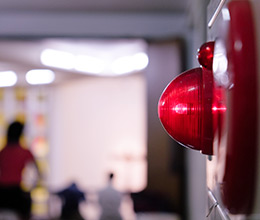
What Is a BDA and How Does It Work?
Discover the benefits of a Bi‑Directional Amplifier system
Every minute counts when it comes to saving people during a crisis. First responders need to have clear and concise radio communication in all areas of a building - especially in spaces where signals can get lost. A Bi-Directional Amplifier (BDA) system overcomes this obstacle by boosting in-building Radio Frequency (RF) signals. This radio signal solution is programmed to perform in structures with dead zones, which occur when radio signals are blocked by metal, concrete, steel windows and other factors. Read on to discover four things you need to know when choosing a BDA system for your customers.
Keeping first responders and the ones they're protecting safe is crucial when choosing a BDA system. There are three main reasons why you should install a BDA system for your customer's building: safety, peace of mind and clear-cut communication.
A radio signal booster system is made up of a few devices that make it perform well in buildings with dead spots. Here are the six main components that a BDA system consists of and how it works.
Any commercial building, such as an apartment, school, stadium, government building or hospital, that has poor connectivity, requires a BDA system. Some buildings may require more than one amplifier depending on coverage needs. To check if a BDA system is needed for a building, check with your local Authority Having Jurisdiction (AHJ). The AHJ will conduct signal tests to determine whether or not a BDA is required in a building.
Adding a BDA system helps bring a building up to code and keeps first responders protected and connected. The Emergency Responder Radio Coverage (ERRC) code states that all newly built buildings provide sustainable radio coverage for emergency responders. Making sure your radio signal booster is up to code is another important life-safety requirement for first responders and the building's occupants. To determine if your BDA system is up to code, review the requirements and licenses that are required by your AHJ.
First responders are faced with many challenges during a critical event, so don't let poor connection signals be one of them. A Bi-Directional Amplifier (BDA) is a life-safety system that gives the right amount of radio signal coverage from the top floor to the ground level of a building. Installing a BDA can help save lives, prevent loss of property and give building owners that added peace of mind.